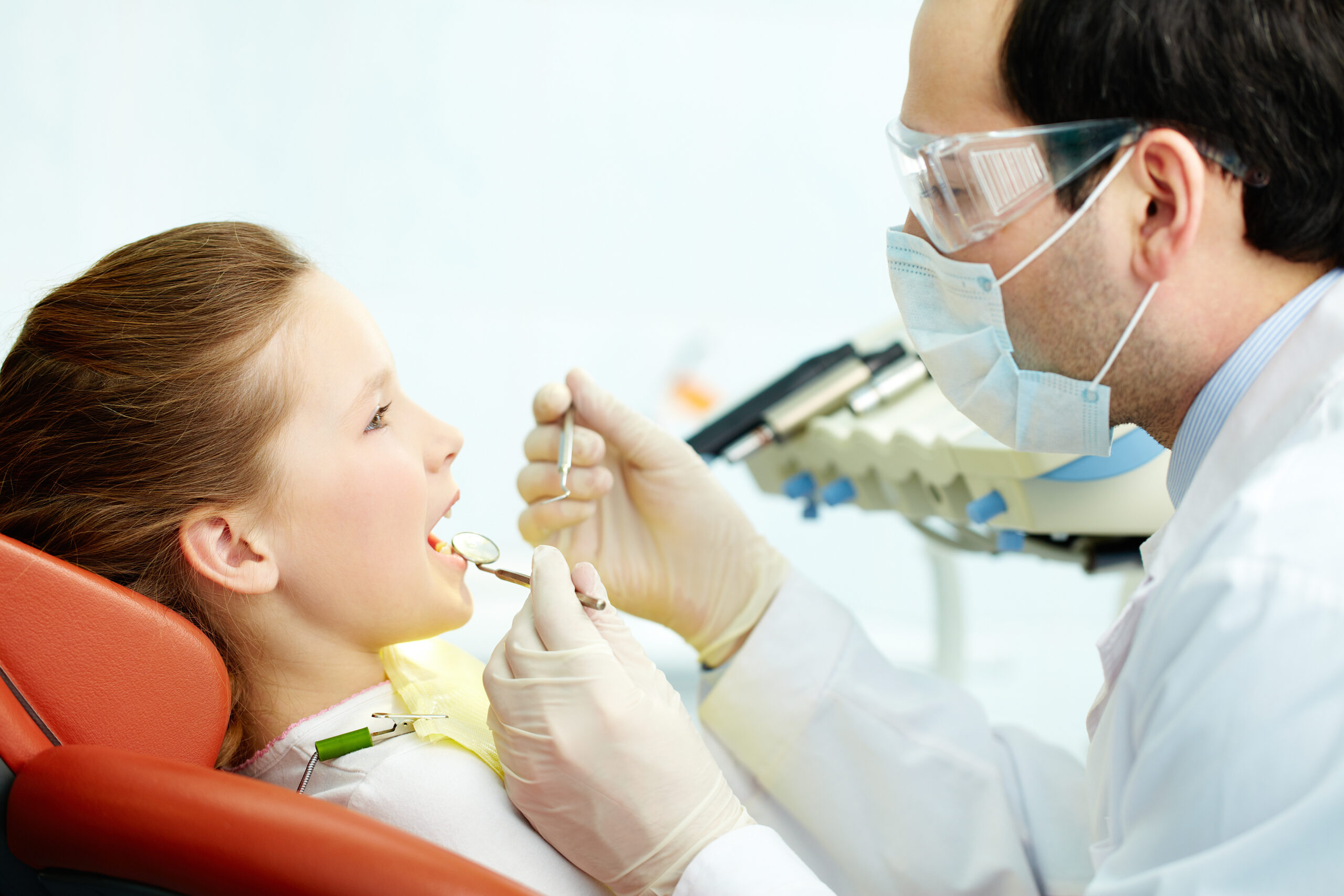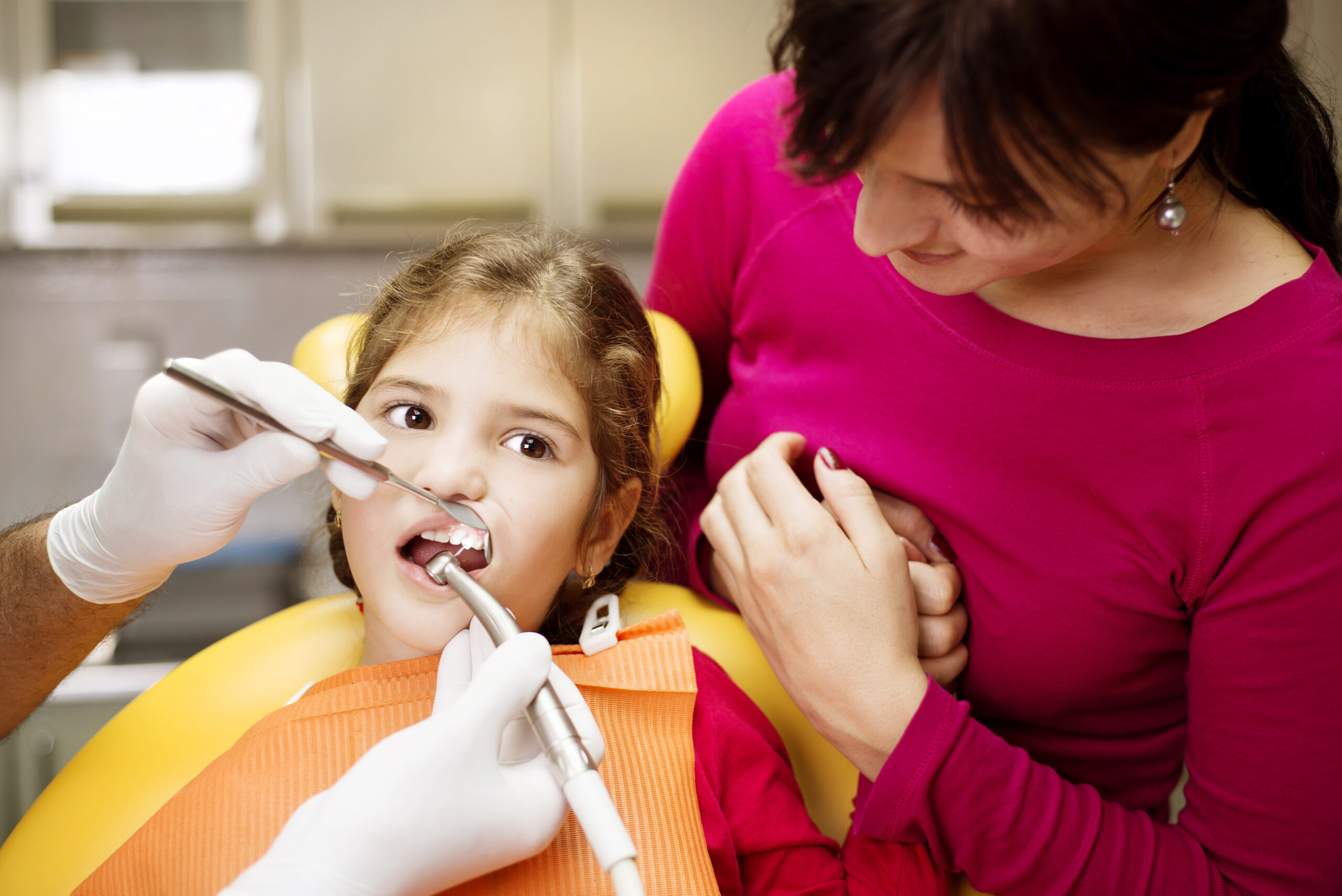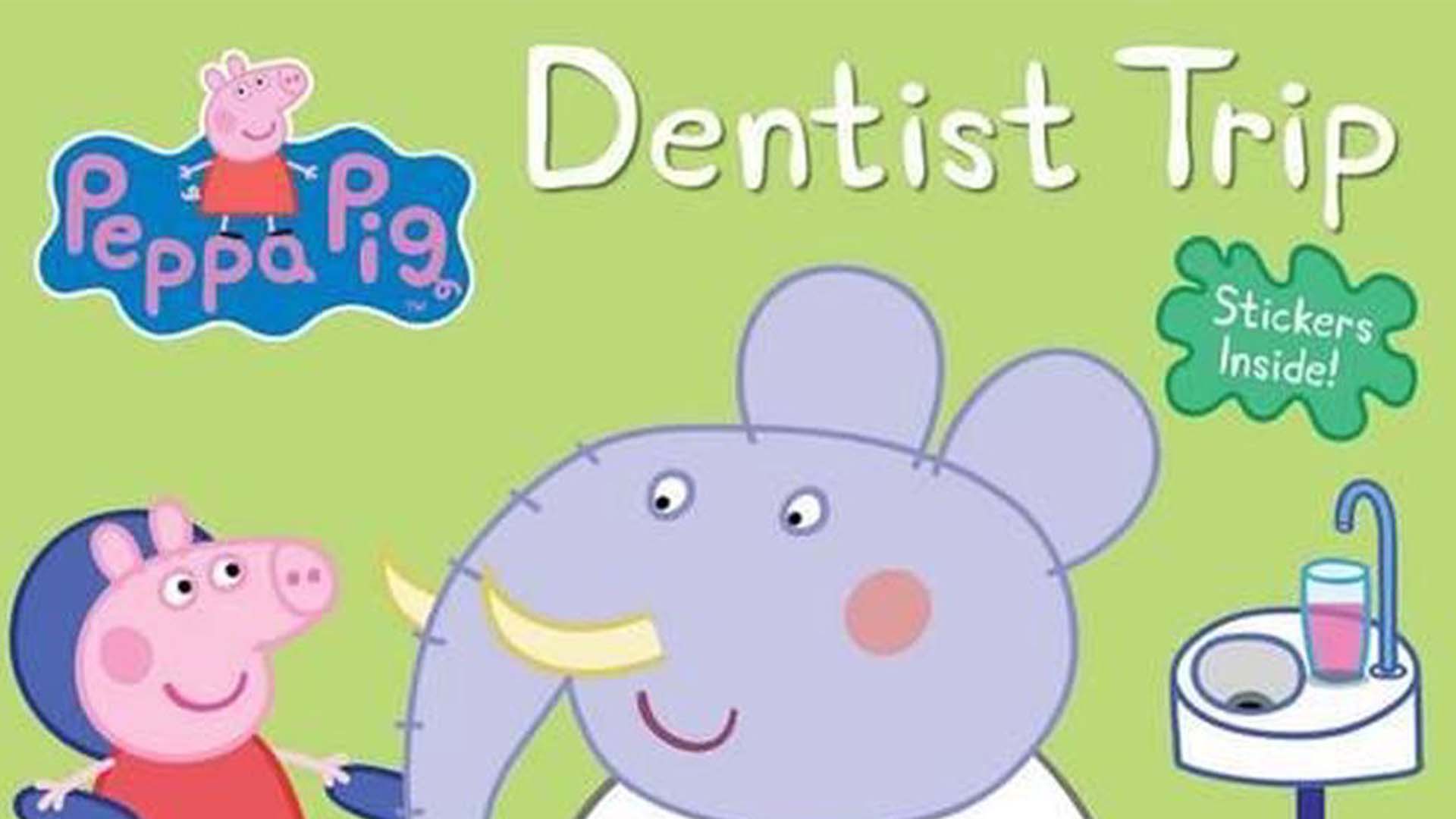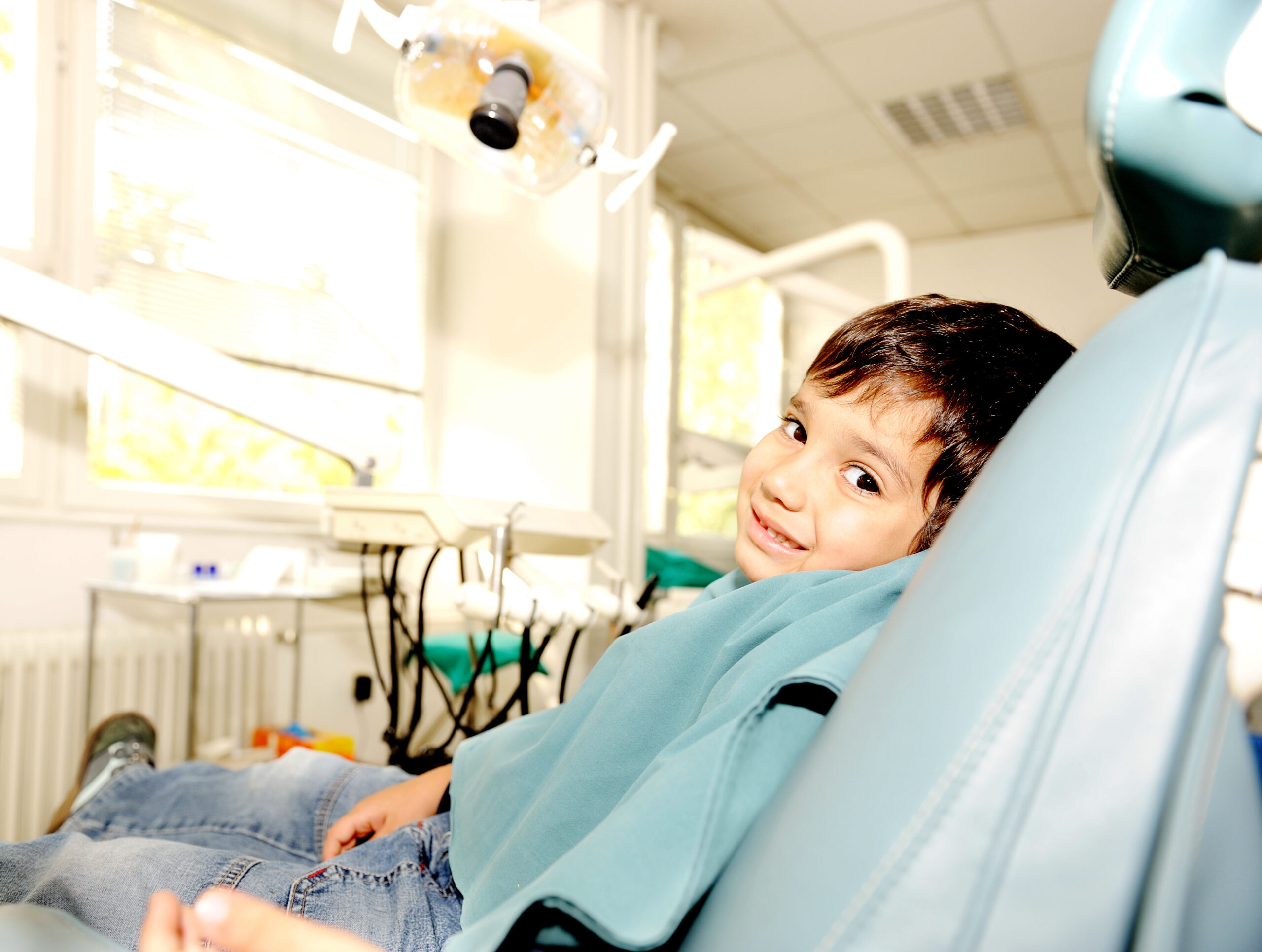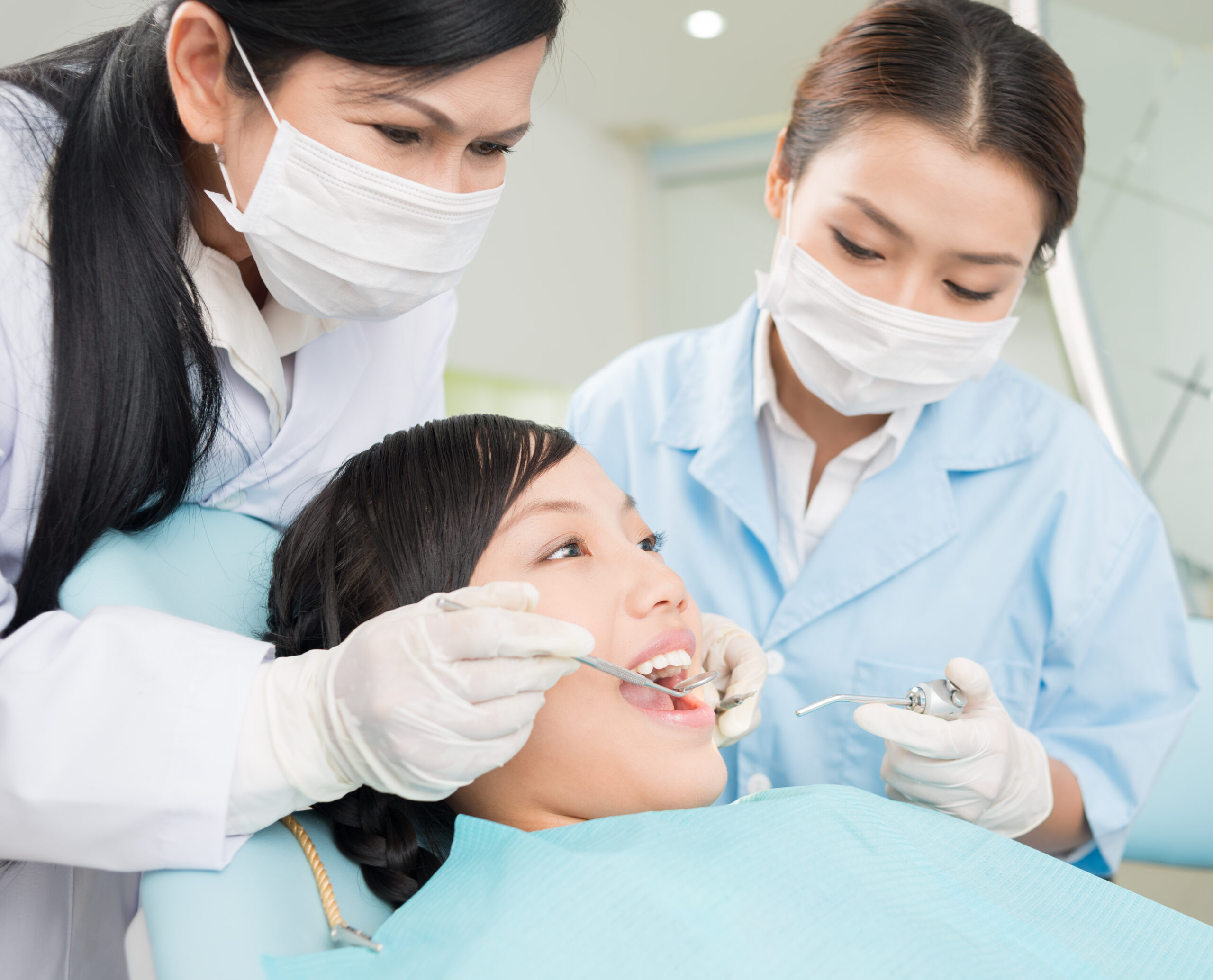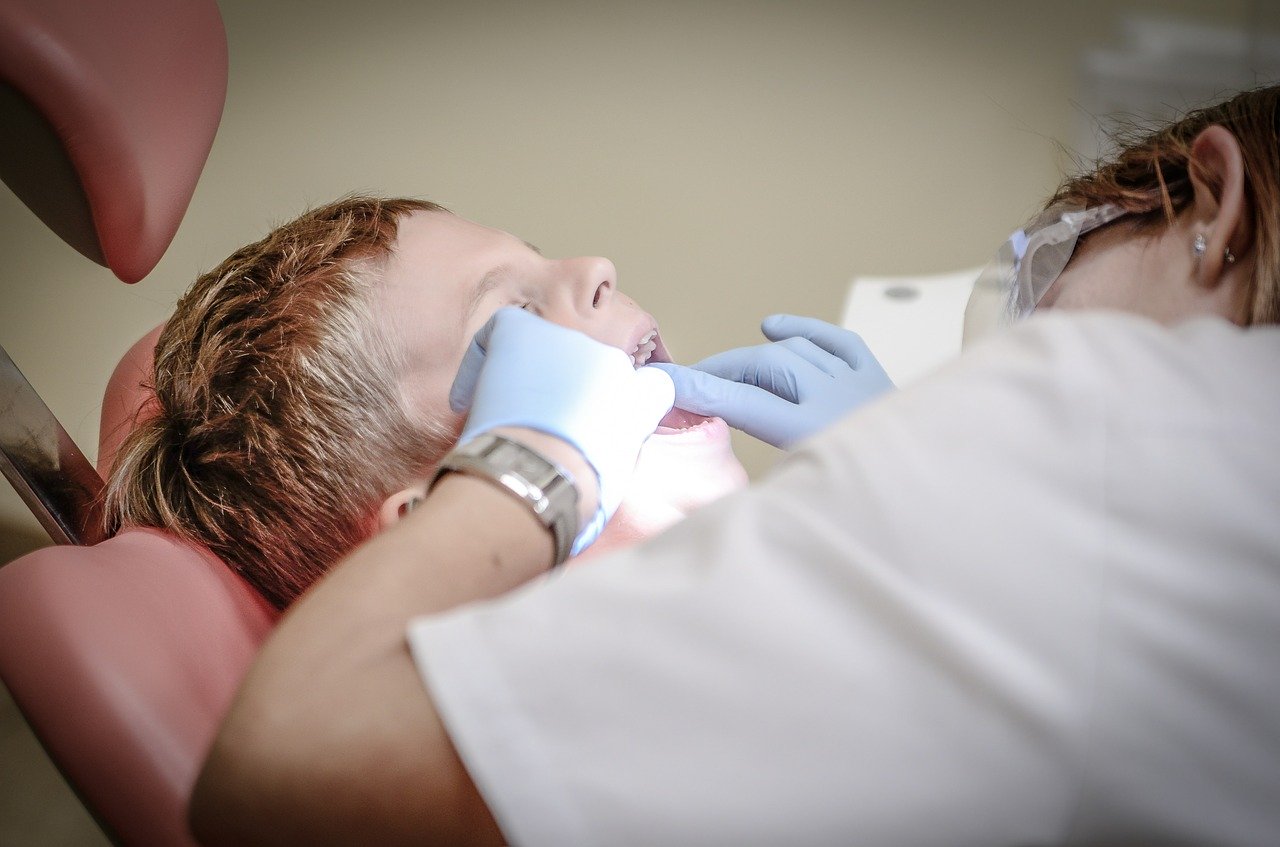
What is Laughing Gas?
March 04, 2020 ABC Children's Dentistry
If your child is anxious about seeing a dentist, you may want to ask your pediatric dentist about using laughing gas during their exam or procedure. What is laughing gas? It is a gas known as nitrous oxide that can help keep your child relaxed and calm while getting dental work done.
Read on to learn more about this gas and how it can help your child have a good experience with their dentist.
What is Laughing Gas?
Nitrous oxide, also known as laughing gas, is a chemical compound. Its chemical formula is N₂O, meaning the compound is two parts nitrogen and one part oxygen. Laughing gas is commonly used as a mild anesthetic. It has no odor and is colorless. Plus, it has no negative effects on the heart, lungs, liver or brain.
Laughing gas is widely used because it works very quickly and its effects are reversible. Once the gas is turned off, the patient returns to their normal self within a few minutes.
How is Laughing Gas Administered?
Nitrogen oxide is breathed in through a small mask that fits over the nose. It is absorbed through the lungs. Patients can easily breathe in the gas, and gain an overall relaxing feeling.
Laughing gas is often used for children because all they have to do is breathe normally to get the effects.
The sedative kicks in within a few minutes. The dentist or dental hygienist can control the amount of sedative, determining the right level of laughing gas for your child.
This type of sedative does not require any type of injection for administration. This also makes it a very popular choice among children and those who are frightened of needles.
It works very quickly, with pain-killing properties developing after just two or three minutes.
How Do I Prepare My Child for Laughing Gas?
You want to make sure that your child has a light meal beforehand, such as soup, toast, or jello. Stop all foods two hours before arriving at your dentist’s office. Once you reach this point, your child is not able to have anything to eat or drink until after the procedure. Aside from fasting for two hours before the dental procedure, there are no precautions to take for your child’s dental visit.
How Should My Child Feel After Receiving Laughing Gas?
Your child will quickly become alert after nitrous oxide is discontinued. The dentist will probably have you wait about 15 minutes before leaving their office to make sure that your child is fully functioning.
Some kids report feeling a bit sick or nauseated, but this should subside within a few hours. It is best to give them some clear water to help hydrate them. If they refuse water, try some diluted fruit juice or Pedialyte.
Contact your doctor if your child vomits more than twice within the first hour of them receiving laughing gas.
What Are the Side Effects of Laughing Gas?
According to the California Dental Association (CDA), most patients do not experience any negative side effects. However, side effects can occur if the levels of nitrous are too high or if the gas is inhaled too quickly.
Possible side effects may include:
- Headaches
- Shivering
- Excessive sweating
- Nausea and/or vomiting
- Fatigue
- Dizziness
Oxygen is given for about five minutes once the nitrous oxide gas is turned off. This helps decrease the chances of getting a headache. The oxygen clears out any residual gas from the lungs while allowing the patient to become more alert and awake.
Will Children Fall Asleep With Laughing Gas?
Nitrous oxide has been used for more than 100 years. It is not designed to put you to sleep, but rather make you feel relaxed. Some patients dose off, but they are not fully asleep. They are able to hear the doctor and respond accordingly.
How Can Nitrous Oxide Calm Anxiety?
Laughing gas is often used when a patient has anxiety about going to the dentist. Three main effects make laughing gas an efficient type of sedative for dental care:
- It decreases anxiety
- It decreases pain
- It creates a euphoric feeling
It slows the body’s reaction time down, which results in a euphoric feeling. This takes away any fear or anxiety that a patient may feel.
Nitrous Oxide History
Nitrous oxide was first used by the English scientist Joseph Priestly in 1793. However, it was not widely acknowledged in the medical field until 1844. It became popular in the 1960s as preferred sedation for dental procedures. From then on, laughing gas has been used for procedures that may not widely call for sedation as a way of relaxing the patient during their procedure.
How Does Laughing Gas Make You Feel?
Laughing gas is not very intense and, though your child is awake throughout the process, they feel tingly and warm. The laughing gas reduces the amount of pain your child feels and because it can make them happy, your child will laugh more easily—hence the name.
Will Nitrous Oxide Make My Child Laugh?
It greatly depends on the patient and how they react to nitrous oxide. This gas is designed to give the patient a good feeling. As a result, patients sometimes become giggly, which is why it has been given the name “laughing gas”. It does not cause your child to become hyper and excited, but rather keeps them calm and relaxed. In doing so, they may become a bit silly, or what we call “ slap happy”.
Nitrous Oxide Allergic Reaction Signs
You must understand the signs and symptoms that may occur as a result of an allergic reaction after inhaling nitrous oxide gas.
These include:
- Fever
- Chills
- Hives
- Wheezing
- Difficulty breathing
If your child experiences any of these symptoms get help immediately. These symptoms can be signs of an allergic reaction.
Frequently Asked Questions About Laughing Gas
How Does Laughing Gas Make You Feel?
Laughing gas offers a relaxed and calm feeling. Your child may experience a slight tingling sensation, but there will be no leftover effects once the gas is turned off. The body may feel numb, and make you feel like you’re in a dream state. Though you may feel sleepy, you will still be able to respond to the dentist.
What Are the After-Effects of Laughing Gas?
There’s no “hangover” effect from laughing gas, and it will be eliminated from your child’s system within three to five minutes.
How Does the Gas Exit the Body?
Once the gas is turned off, it quickly exits the body via normal breathing. Your child may receive oxygen for five minutes to help clear out the gas.
How Long Will It Take My Child to Wake Up After Laughing Gas?
Once the gas is turned off, the child will breathe normally and should be fully awake within five minutes.
How Long Does It Take for Laughing Gas to Take Effect?
Nitrous oxide works very quickly. Patients should expect to feel the full effects within two to three minutes.
Why Would a Dentist Choose to Use Laughing Gas for a Child?
Nitrous oxide is safe, quick to act, and quick to escape the body. Because of this, there is little to no risk of laughing gas. It allows the child to relax while the dentist works on their teeth. It helps those with low pain tolerance get through fillings or other dental work that can cause discomfort and anxiety.
Is Laughing Gas Safe for My Child?
Yes! Laughing gas has been used for hundreds of years and is very safe for pediatric patients. This gas does not have any impact on the brain, lungs, kidneys, heart, or liver. Your child may be a little dizzy after laughing gas, so be sure to monitor them when they get up and down.
Can You Still Feel Pain on Laughing Gas?
Nitrous oxide affects the nervous system, which dulls sensitivity to pain. This gas helps take away the anxiety and allows patients to feel calm. However, local anesthetic may still be used to help dull pain.
Laughing gas can help take away the pain, but some patients still feel mild discomfort. Because of this, it is recommended to use a local anesthetic during procedures that may cause a lot of pain and discomfort.
Laughing gas is designed to work with anesthetic so patients can be comfortable and pain-free during their procedures. A local anesthetic may be administered in gel form or via a needle.
What Happens to Your Body on Nitrous Oxide?
Nitrous oxide is a safe form of gas when it is administered by a professional. When inhaled, it replaces the air in your lungs and slows down the body’s ability to respond. Effects vary based on the patient’s tolerance and how much gas they are given. Once the gas is stopped, the effects wear off within two to five minutes.
Is It OK to Eat Before Laughing Gas?
Your pediatric dentist will ask that your child have nothing to eat or drink two hours before their appointment. This is mainly because the gas can cause feelings of nausea; there is a lower chance of the child vomiting if they have very little in their stomach beforehand. A light snack two hours prior to the procedure is acceptable. There are no dietary restrictions after receiving nitrous oxide.
Can You Request Laughing Gas at the Dentist?
You can request laughing gas at your dentist’s appointment. Mostly, if a dentist senses anxiety or knows that the procedure can be uncomfortable, they will recommend using laughing gas. Of course, if you feel anxious about your upcoming dental visit, you always have the option to ask your dentist if laughing gas is available to you.
Can You Drive After Laughing Gas?
Laughing gas completely exits the body within five minutes of it being discontinued. Therefore, you will be able to drive after your appointment.
Can My Child Return to School After Laughing Gas?
Yes! Because laughing gas quickly leaves the body, there are no activity restrictions after the gas is discontinued. Therefore, your child is able to return to school after receiving laughing gas.
For Compassionate and Fun Pediatric Dental Care, Call ABC Children’s Dentistry in San Diego
What is Laughing gas? Schedule an appointment for your child’s dental care, call ABC Children’s Dentistry here in San Diego to find out more!
You can reach us online, via email, or call us at (858) 780-9794.

